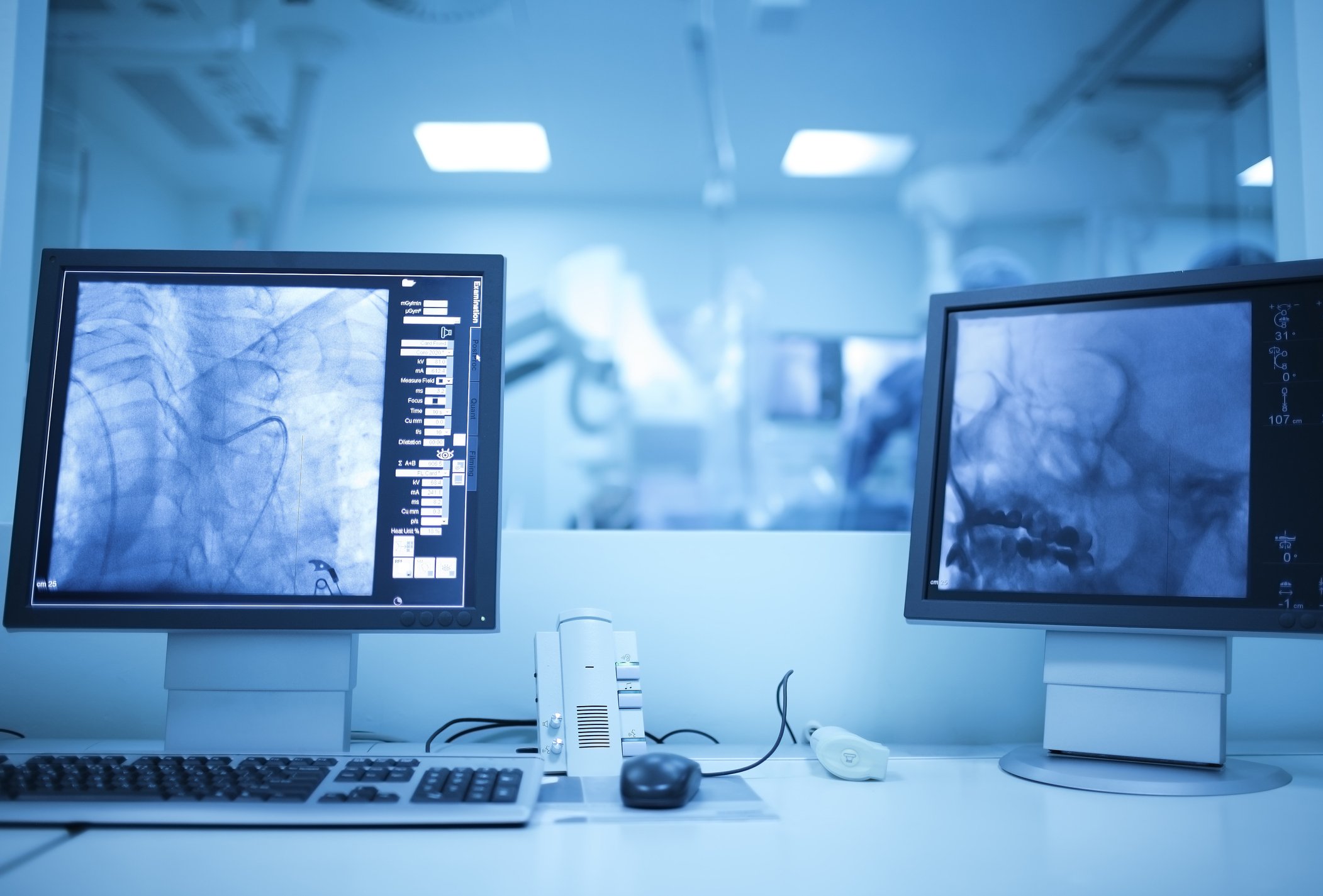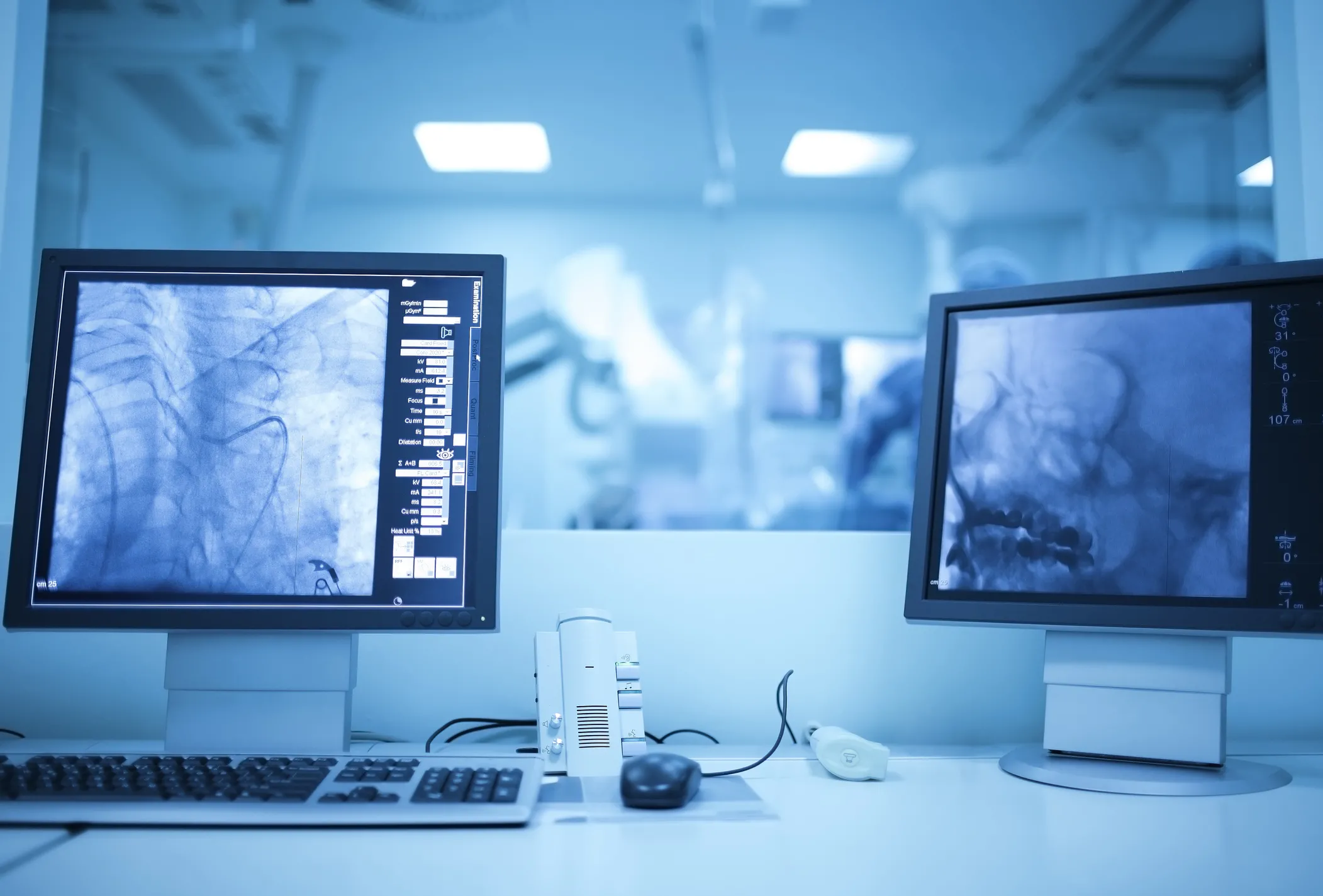A Primer on Modern Minimally Invasive Heart Care
Are you familiar with minimally invasive surgery?
Treatment for heart attacks, artery blockages and chest pain has advanced beyond open-heart surgery for all patients. While open heart surgery is still a very important part of comprehensive heart care, many concerns of the heart can be treated without needing to open up the chest in the Cardiac Catheterization Lab.

Cardiac Catheterization Labs offer alternatives to surgery
A Cardiac Catheterization lab is a minimally invasive operating room, where cardiologists use advanced X-ray imaging technology to view and treat the heart without in-depth surgery—which is why it has been deemed minimally invasive. In this lab, X-ray enables doctors to see inside the body. They view a computer monitor as catheters and wires are inserted through a small cut in the skin, reaching into the arteries of the heart or heart structure for the following procedures.
Coronary angiography
This procedure uses a liquid contrast medium to check blood flow to and from the heart and detect narrowing of the heart arteries. Often, when patients come to the Emergency Department with heart attack symptoms, they will undergo an angiography to determine if they have had, or are at risk, for a heart attack.
Angioplasty
The most common cardiac procedure in the country, angioplasty, or artery opening, is typically performed if the source of a heart attack, or blockage, is detected during the coronary angiography.
Stent
During an angioplasty, a stent can also be placed in the artery, which keeps the artery from collapsing and becoming blocked once again. This procedure is expedited for heart attack patients, with the goal of treatment within 90-minutes.
Electrophysiology test (EP)
EP testing for abnormal heart rhythm, or arrhythmia, can also be performed in the Cath Lab. This is effective for patients with documented symptoms like fainting or uncontrolled fast heartbeats.
Electrophysiology Ablation
During an ablation, the doctor creates a scar across internal heart tissue. This scar stops extra heartbeats which cause the heart muscle to overwork. It alsocorrects the heartbeat bringing it closer to normal.
Pacemaker or Rhythm Device Implant
Rhythm device implants are used when either the heart beats too slow or fast, and for hearts that have stopped beating, but have restarted after being shocked. If the type and location of the arrhythmia is identified, the physician can treat it on site in various ways, including inserting medical devices to help the heart beat properly.
These minimally invasive Cardiac Cath Lab procedures make up the bulk of today’s life-saving heart procedures. It’s important to know if your area hospital offers these services, because in a cardiac emergency, quick care is essential.
Sherwood A. Moore, Sr., MBA, RCIS, ACVP, is the Cardiovascular Administrator for Chesapeake Regional Healthcare. In this role he oversees both the Diagnostic and Interventional Cardiology Departments, the Chest Pain Center at CRH, and Peripheral Vascular and Neurodiagnostic Services. As a registered cardiovascular invasive specialist, he also worked to develop the interventional program, and the patient care team that provides cardiac care in the Cath Lab.
